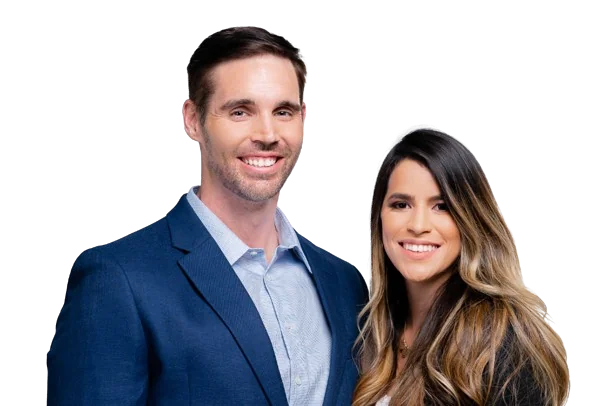HELOC – Home Equity Line of Credit
There are many reasons to invest in a home. You have more freedom to change a property you own than a rented living space. A house can provide security and consistency as you build your life in a specific community. Lastly, your monthly mortgage payment builds equity in the home, creating the potential for financial gain in the future.
Accessing home equity is essential to take advantage of your investment and mortgage payments. One of the most flexible strategies for accessing the available equity is with a home equity line of credit (HELOC). This is also called a home equity loan instead of a home equity line of credit. However, these are different. A home equity loan provides a lump sum, not a line of credit.
As an experienced lender, TrueWay Mortgage can help you understand how a home equity line of credit may benefit you financially. Our team offers competitive interest rates and personalized solutions to ensure a HELOC enables you to achieve your financial objectives.


What is a HELOC?
A home equity line of credit, or HELOC, works like a credit card. Unlike a home equity loan, it is a revolving credit line from which you can borrow repeatedly as long as you repay the borrowed amount. Most make monthly payments on the line, just like a credit card.
The amount you can borrow depends on how much equity you have in the home. If you have lived in the house for many years and consistently made monthly payments, or the home's value has increased significantly, you will have access to a higher credit line.
For example, let’s say you open a HELOC with a credit line of $5,000. You could borrow against the home’s equity up to that amount. You can borrow that amount again if you pay it back with regular monthly payments. This is why a HELOC is comparable to a credit card.
How Does a HELOC Work?
Understanding how a HELOC works is essential so it benefits your financial circumstances. Some homeowners may not understand the mechanics correctly, leading them into more debt.
First, there are two stages when you open a HELOC: the draw period and the repayment period. You can borrow as much money as you like up to that credit line during the borrowing period.
If you pay any amount back, you can continue to draw from the home equity line of credit within the maximum limit. You could borrow money as many times as you like during the draw period as long as you pay it back before borrowing again.
As you borrow, you only have to make interest payments to keep the HELOC open. You can also make principal payments to replenish the funds if you plan to borrow from the line of credit again.
The next stage of the HELOC is the repayment period. At this point, you can no longer draw money from the HELOC. Additionally, all your payments will go toward interest and principal. The interest rate on a HELOC is typically a variable interest rate, meaning it can change.

It’s important to note that you have a variable rate instead of a fixed rate to prepare for potential rising interest rates after the draw period ends. Your variable rate will depend on the Federal Funds Rate, a fixed rate set by the Fed. Lenders will also consider your credit history. Most add a margin to the prime rate to determine an annual percentage rate.
Some lenders charge an annual fee for a HELOC, just like credit card companies. They may charge application fees, appraisal fees to determine available equity, and more. Lenders consider whether you’re an existing customer and other factors when determining fees.
TrueWay Mortgage has helped many homeowners secure HELOCs, and we are committed to helping you understand this financial strategy and see if it works for you. Our agents will ensure you understand the draw period and variable rate before committing.
Key Features of a HELOC
A home equity line of credit is a unique tool that homeowners can use to pay for some of their expenses. Whether you want to invest in home renovations, pay off other debts, or cover a major expense, a HELOC is a great way to access money through your home’s equity.
Let’s look at the key features of a HELOC, such as the draw and repayment periods, the revolving credit feature, and the interest rates. This can help you determine if a line of credit (HELOC) is best for your financial circumstance.
Draw Period vs. Repayment Period
There is an initial draw period followed by a repayment period with a HELOC. The borrowing period often lasts for ten years. During this stage, the homeowner can withdraw money up to the credit limit and make interest-only payments. Paying the principal balance with timely payments replenishes the credit line, much like a credit card, allowing you to borrow money again.
Once the draw period ends, the repayment period begins, often lasting for twenty years. Your payments will include interest and principal. You can no longer draw cash from a home equity line of credit once the repayment period has begun.
Variable Interest Rates
Most HELOCs include a variable interest rate. This means the percentage can change from month to month depending on the index prime rate in the market and the terms of the HELOC rate.
This could result in unpredictable payments if the market shifts while your HELOC is open. Sometimes, you could have a fixed interest rate on a portion of your HELOC to create payment stability, but you must work that out with the specific lender.
The more money you owe in principal, the greater your interest payments will be, so paying down the loan amount on your HELOC frequently can help you save money in the long run. Review your payment terms to understand how the interest rate works and what your maximum rate is.
Credit Limit Based on Home Equity
Your credit limit determines the maximum loan amount you can borrow during the draw period before making principal payments to replenish the funds and borrow more. The most critical metrics for calculating this limit are the current mortgage balance and the home’s market value.
You can use a formula to calculate your HELOC's most likely credit limit. Multiply the lender’s maximum loan-to-value ratio by your home's appraised fair value. Then, subtract the remaining mortgage balance from that number. The result is the highest possible credit limit you could obtain from a lender HELOC.
Imagine the maximum LTV ratio for your lender’s HELOC requirements is 80%. The current value of your home is $350,000, but you only owe $180,000 in principal on the current mortgage. Then, 80% of $350,000 is $280,000. When you subtract the remaining home loan balance, you get $100,000. This is the maximum credit line you could obtain from that lender on a HELOC.
Benefits of a HELOC
A HELOC is an excellent tool for homeowners who have built significant property equity. A HELOC offers key benefits homeowners won’t get with a second mortgage or new loan. The two best ways to build equity are by paying your mortgage and increasing the home's value.
If you open a home equity line of credit, you can experience financial flexibility. You will also find lower interest rates than most types of personal loans. Some of the interest you pay on the HELOC may also be eligible for tax deductions.
Lower Interest Rates
Another advantage for homeowners with a line of equity-based credit is lower interest rates. If you were to use a credit card or personal loan for certain expenses, you would likely pay more on interest. Borrowing money from your HELOC will result in lower interest payments, which means long-term savings.
The interest rates for a home equity loan and a home equity line of credit (HELOC) are very similar, so either option could help you save money compared to personal loans and credit cards.
Ideal for Large Expenses
If you have a significant expense coming up, a HELOC can help you pay for it while enjoying long-term savings. You may be pursuing your education and must pay a hefty tuition bill. If the home needs significant upgrades like a new roof, the interest on a HELOC will yield more savings than other financing options. You could also draw cash from this line of credit to pay off other high-interest debts, such as credit cards or student loans.
Flexible Access to Funds
Accessing funds is the sole purpose of opening a HELOC. Since it is a revolving line of credit, you can borrow up to the maximum limit to pay for essential expenses, such as home improvement projects or existing debt. As long as you pay interest when required, you can borrow any time during the draw period. Plus, you can replenish the funds to borrow again by making principal payments.
A revolving line of credit grants you access to funds whenever needed. Whether you need a lump sum payment for an emergency expense or want to upgrade your kitchen to increase the home’s value, an open HELOC allows you to take advantage of your mortgage payments.

Eligibility Requirements for a HELOC
Not everyone will automatically qualify for a HELOC. Lenders will still assess the risk of a borrower before approving a HELOC, so they will look at metrics like credit scores, income, and home equity.
Credit Score and Debt-to-Income Ratio
Although many lenders will have slight differences in their requirements, they generally look for the same regarding credit scores and debt-to-income ratios. The minimum credit score to qualify for a HELOC typically falls in the 620-680 range.
However, multiple lenders will make exceptions if you have more significant equity or a low debt-to-income ratio. Your DTI ratio compares your monthly debts to your monthly income. The lender’s maximum DTI ratio is likely between 43% and 50%. The higher your credit score and the lower your DTI ratio, the better your chances of being approved for a HELOC.
Home Equity Requirements
The equity requirements for a HELOC depend on numerous elements, such as the value of your home, the outstanding balance on your mortgage, and the lender’s maximum LTV ratio. Generally, you must have at least 15-20% equity in your home to qualify for a HELOC, though your credit line maximum will be reduced. TrueWay Mortgage can help you determine your eligibility for a HELOC based on these criteria.
Why Choose TrueWay Mortgage for a HELOC?
Choosing a trusted lending partner is essential when pursuing a financial product as a homeowner. Whether you are applying for a primary mortgage, a home equity loan, or a line of credit, TrueWay Mortgage can offer expert guidance and a customer-focused approach.
We work to understand your needs and objectives before recommending a path to financing. TrueWay Mortgage can provide competitive interest rates on your line of credit, resulting in long-term savings when you draw funds.

Contact Sam and Anisha Mauldin
TrueWay Mortgage
Start Your HELOC Journey Today
The TrueWay Mortgage team is ready to answer all your questions about HELOCs. If you have concerns about closing costs, the structure of monthly payments, or a variable versus fixed interest rate, we will help you understand these terms before opening a HELOC. Check out our quick quote tool to view today’s rates, or call us at 404-962-0032 for a free consultation.
